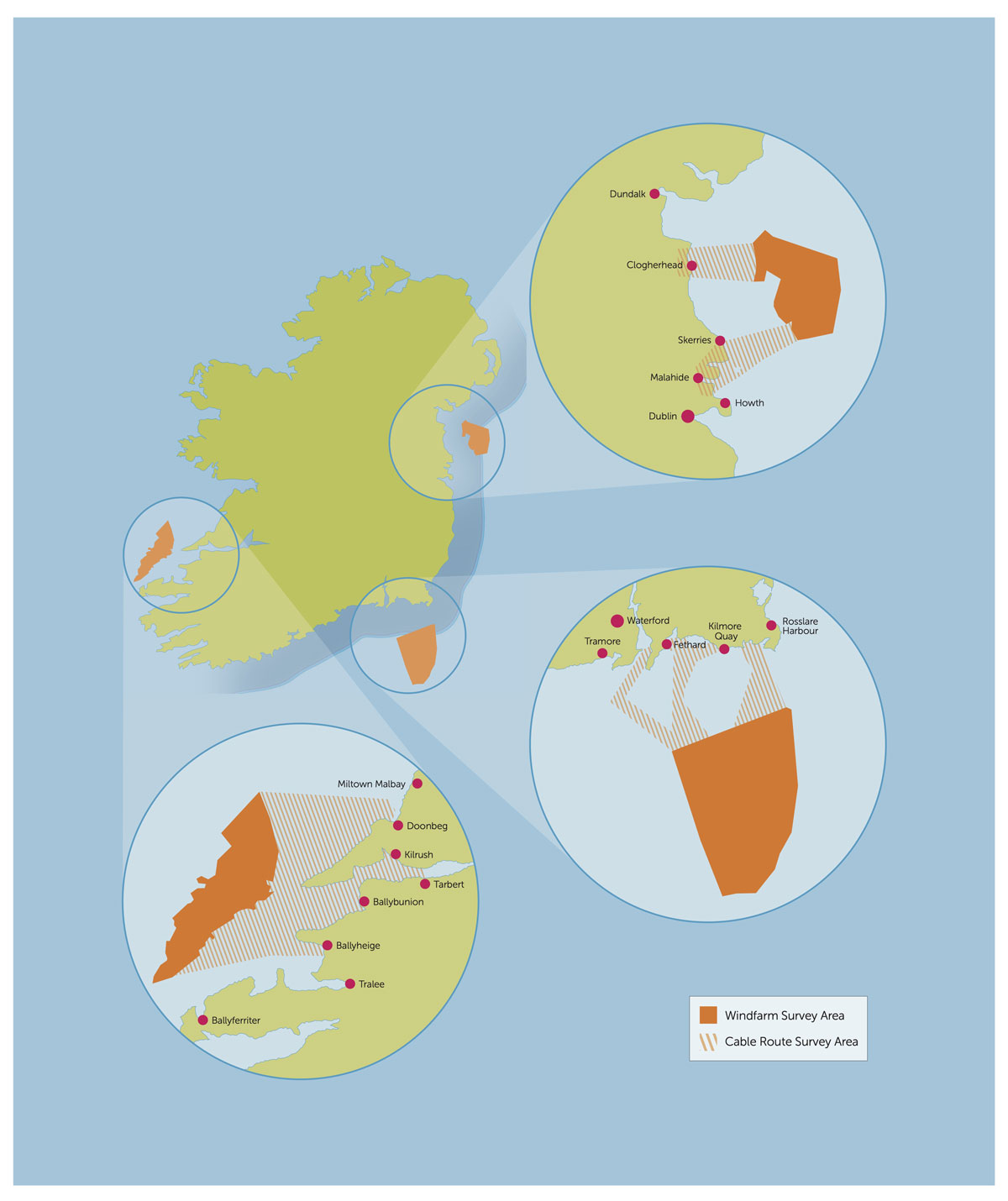Expensive Offshore Wind Farms: Why Energy Firms Are Turning Away

Table of Contents
Soaring Capital Expenditure and Inflationary Pressures
The dramatic increase in the cost of developing offshore wind farms is a primary reason for the hesitation among energy firms. This surge is driven by a perfect storm of factors, significantly impacting the overall project feasibility and return on investment.
- Inflationary pressures impacting construction costs significantly. The cost of raw materials like steel and concrete, essential components of offshore wind turbine foundations and structures, has skyrocketed in recent years. This inflationary pressure, combined with increased labor costs, significantly inflates the overall project budget.
- Increased competition for resources driving up prices. The global demand for steel and specialized equipment used in offshore wind construction is high, leading to increased competition and inflated prices. This scarcity further exacerbates the already challenging financial landscape.
- Supply chain disruptions further exacerbate cost increases. Recent global events have highlighted the fragility of supply chains, resulting in delays and price hikes for critical components. This unpredictable nature of supply chains adds another layer of risk to offshore wind farm development.
- Escalating permitting and regulatory costs. The permitting and regulatory processes for offshore wind projects are often lengthy and complex, leading to significant legal and administrative fees. These costs add to the already substantial financial burden.
The impact extends beyond material costs. Financing challenges are also significant. Higher interest rates and reduced investor confidence in the sector due to the high initial investment and uncertain return timelines contribute to a less favorable investment climate for expensive offshore wind farms.
Technological Challenges and Operational Hurdles
Offshore wind farm development presents unique technological and operational challenges, significantly contributing to the high overall cost. The harsh marine environment adds considerable complexity to both installation and maintenance.
- High maintenance costs due to harsh marine environments. The constant exposure to salt, wind, and waves leads to increased wear and tear on turbines, requiring frequent and costly maintenance. Repairing and servicing turbines located far from shore necessitates specialized vessels and skilled technicians, further driving up operational expenses.
- Difficulty in accessing and repairing turbines located far from shore. Accessing and repairing faulty turbines situated miles from the coast is a logistically challenging and time-consuming process, requiring specialized vessels and highly trained personnel. This inaccessibility dramatically increases downtime and maintenance costs.
- Technological limitations in turbine efficiency and lifespan. While technology is constantly improving, the efficiency and lifespan of offshore wind turbines are still subject to limitations. This impacts both the energy output and the long-term economic viability of these projects.
- Integration challenges with existing energy grids. Connecting offshore wind farms to the onshore grid presents significant infrastructural challenges. Upgrading the grid to accommodate the influx of renewable energy adds considerably to the overall project cost.
The need for specialized vessels, highly skilled labor, and sophisticated maintenance strategies significantly contributes to the high operational expenses associated with offshore wind farms, making them a less attractive investment compared to other renewable energy options.
Grid Connection and Transmission Bottlenecks
Connecting offshore wind farms to the onshore power grid is a significant hurdle, impacting project timelines and escalating costs. This often-overlooked aspect plays a crucial role in the overall economic feasibility of these projects.
- High cost of building and upgrading transmission infrastructure. Constructing new transmission lines and substations to connect offshore wind farms to the grid is a capital-intensive undertaking. The cost of this infrastructure often represents a substantial portion of the overall project budget.
- Permitting delays and regulatory hurdles in grid connection approvals. The permitting process for grid connection projects is often protracted and complex, resulting in delays that further increase costs and potentially jeopardize project viability.
- Lack of adequate grid capacity in certain regions. In some regions, the existing grid infrastructure lacks the capacity to accommodate the additional power generated by large-scale offshore wind farms. Upgrading the grid capacity adds to the overall cost and complexity.
- Long lead times for grid connection projects. The lead times associated with grid connection projects can be substantial, impacting the overall project timeline and potentially delaying the return on investment.
These bottlenecks contribute to increased project risk and uncertainty, deterring investors who seek more predictable and cost-effective energy solutions.
Environmental Concerns and Public Opposition
Despite their environmental benefits, offshore wind farms are not without environmental concerns and potential public opposition, both of which can significantly impact costs.
- Impact on marine ecosystems (e.g., seabirds, marine mammals). The presence of wind turbines and construction activities can potentially affect marine ecosystems, leading to concerns about the impact on seabirds, marine mammals, and other marine life. Mitigation measures to address these concerns add to the overall project costs.
- Visual impacts and concerns about landscape aesthetics. The visual impact of offshore wind farms is a concern for some communities and stakeholders, leading to potential public opposition and delays in project approvals. Addressing these aesthetic concerns through design modifications may also add to costs.
- Noise pollution and its effects on marine life and nearby communities. Noise pollution from turbines and construction activities can affect marine life and nearby communities. Mitigating noise pollution through various measures adds complexity and cost to the projects.
- Potential risks of accidents and oil spills during construction and operation. There is an inherent risk of accidents and potential oil spills during the construction and operation of offshore wind farms. Implementing safety measures and insurance policies to address these risks increases costs.
These concerns can result in lengthy legal battles, expensive environmental impact assessments, and costly mitigation measures, ultimately contributing to the high overall costs of expensive offshore wind farms.
Competition from Cheaper Energy Sources
The rising costs of offshore wind are further exacerbated by competition from other renewable energy sources, particularly onshore wind and solar power, which are often more cost-effective.
- Falling costs of solar and onshore wind power. The cost of solar and onshore wind power has decreased significantly in recent years, making them increasingly competitive with offshore wind.
- Faster deployment times for onshore renewable energy projects. Onshore wind and solar projects typically have shorter lead times for development and deployment compared to offshore wind farms.
- Improved efficiency and technological advancements in solar and onshore wind. Continuous advancements in solar panel and wind turbine technology have led to improved efficiency and reduced costs for onshore renewable energy.
- Government support and subsidies favoring less expensive renewable options. Government policies and subsidies often favor the deployment of less expensive renewable energy options like onshore wind and solar.
This competitive landscape makes it more challenging to justify the investment in expensive offshore wind farms when more cost-effective alternatives exist.
Conclusion
The high cost of development, operational challenges, grid connection bottlenecks, environmental concerns, and competition from cheaper energy sources are all contributing factors to energy firms' reluctance to invest in expensive offshore wind farms. While the potential for clean energy is significant, the current economic landscape makes these projects increasingly difficult to justify. The future of offshore wind power relies on addressing these challenges. Further research into cost-effective technologies, streamlining the permitting process, and addressing environmental concerns are crucial for making expensive offshore wind farms a more viable and attractive investment. Only then can we harness the full potential of this important renewable energy source.

Featured Posts
-
 Ufc Fight Night Sandhagen Vs Figueiredo Complete Preview And Predictions
May 04, 2025
Ufc Fight Night Sandhagen Vs Figueiredo Complete Preview And Predictions
May 04, 2025 -
 Bradley Cooper And 7 Year Old Daughter Lea In Green At Super Bowl Lix
May 04, 2025
Bradley Cooper And 7 Year Old Daughter Lea In Green At Super Bowl Lix
May 04, 2025 -
 Leadership Change In Reform Uk Farage Vs Lowe
May 04, 2025
Leadership Change In Reform Uk Farage Vs Lowe
May 04, 2025 -
 Ultima Rodada Do Paulistao 2025 Corinthians X Guarani Transmissao Online E Tv
May 04, 2025
Ultima Rodada Do Paulistao 2025 Corinthians X Guarani Transmissao Online E Tv
May 04, 2025 -
 Your Guide To The Ufc In May 2025 Ufc 315 And Beyond
May 04, 2025
Your Guide To The Ufc In May 2025 Ufc 315 And Beyond
May 04, 2025
